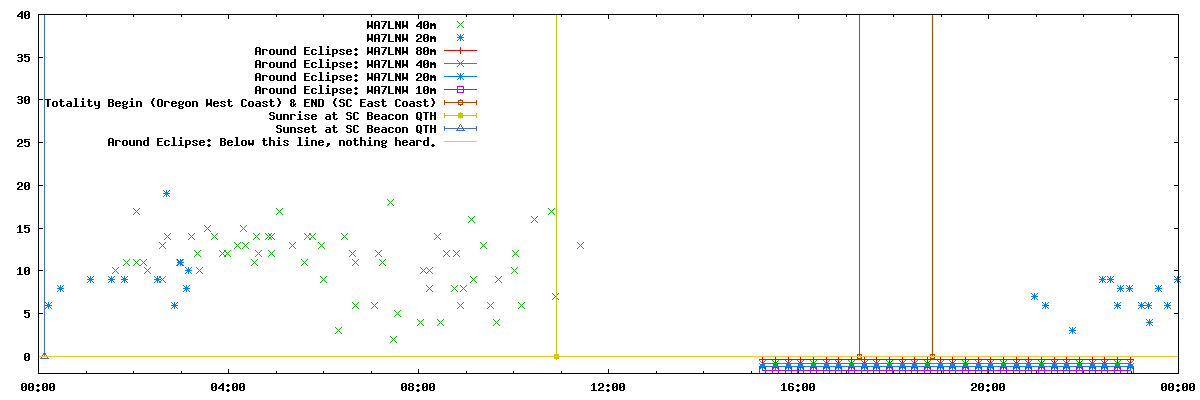Below we plot these receptions and their reported signal-to-noise ratio (in decibels) for the stations with more than roughly 100 reports. All 6 days are folded over each other, with the horizontal scale running from 00:00 to 23:59 UTC. The mark is a different color and shape depending on which of the 4 bands it was heard on.
During the period from 15:00 UTC to 23:00 UTC on the day of the eclipse (Aug 21), two things are different: The points are connected by lines, and "missing points" are drawn below the zero line. Outside this interval, missing points are not marked. The Reverse Beacon Network does not report reception within 10 minutes of aother report on the same frequency, by the same station. So we use a criteron of 15 minutes for determining a missing point. If no reception is reported within 15 minutes, we record a missing point, and start another 15 minute interval before recording another missing point.
Two vertical brown lines mark the begin and end of totality in the continental US states, at 17:17 UTC when totality hits the West Coast of Oregon, and at 18:49 UTC when totality leaves the East Coast of South Carolina.
Two more vertical lines mark sunrise and sunset at the transmitter QTH, with sunrise around 10:54 UTC (the olive line) and sunset at 00:07 (the blue line).
In many of the graphs you can see the eclipse affecting the blue stars connected by lines representing the reception of the 20m beacon. They tend to fade when totality is about halfway across America, and return by an hour after totality has left America. More questionable is what happens during the hour or so before totality begins (say from 15:30 to 17:15); for several stations, that time period seem weaker or spottier than during the beginning of totality.
There is no guarantee the receiving stations were functional during the eclipse or at any other particular time, or on any band, unless it reported a positive reception. You'll notice one station N2GZ that seems to have been up only around the time of the eclipse, and some stations (e.g. VE2WU) that were not up at all around the eclipse. Also remember this is a report of signal-to-noise ratio, not the actual power we were received at. The most reports were from K1TTT, which regularly reported 80m at night, and even some sporadic 10m spots.
I think it's hard to draw strong conclusions from such spotty data, except that 20m reception can be seen to suffer consistently in a number of the plots.
de W6REK (Henry Strickland) (github.com/strickyak/eclipse-cw-beacon)
AA4VV
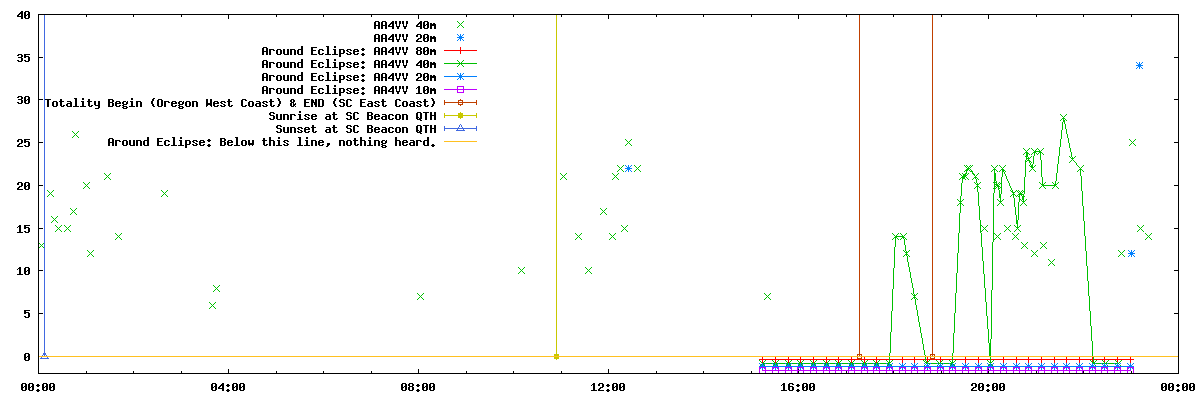
K1TTT
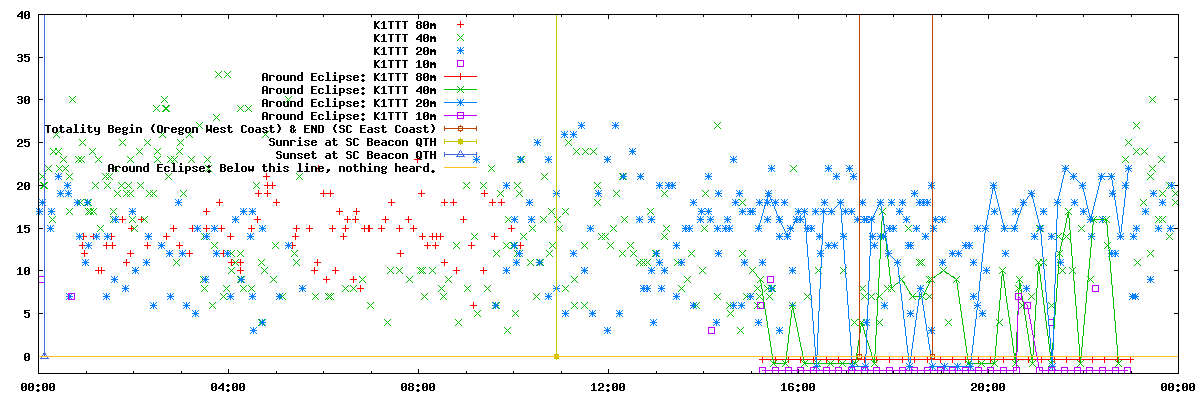
K2PO
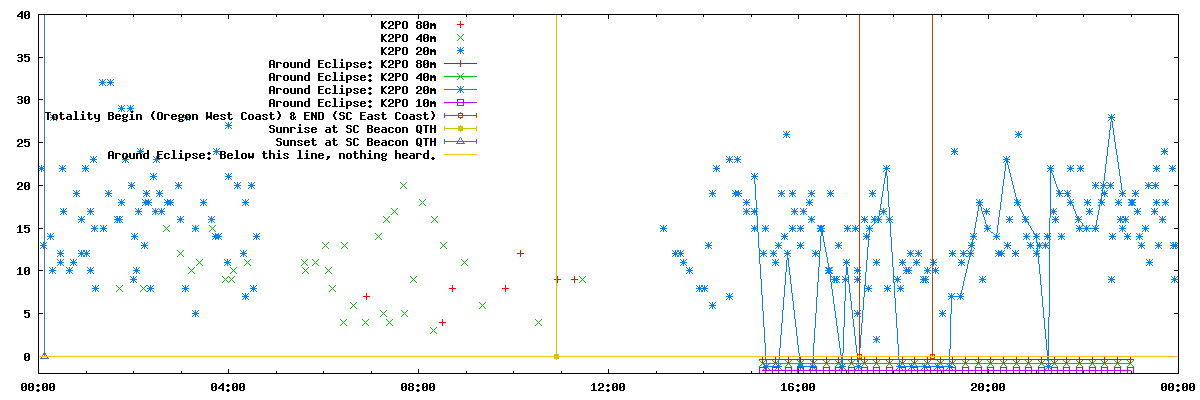
K5JBT
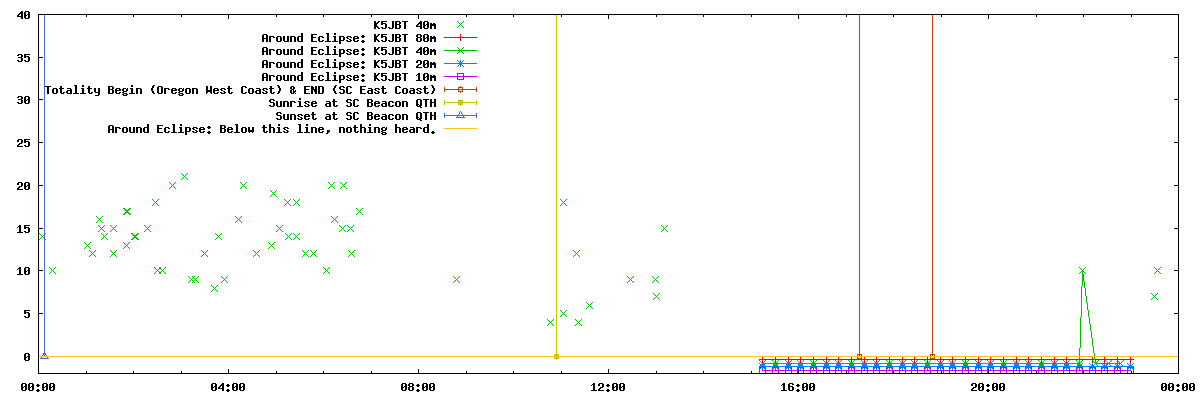
KM3T
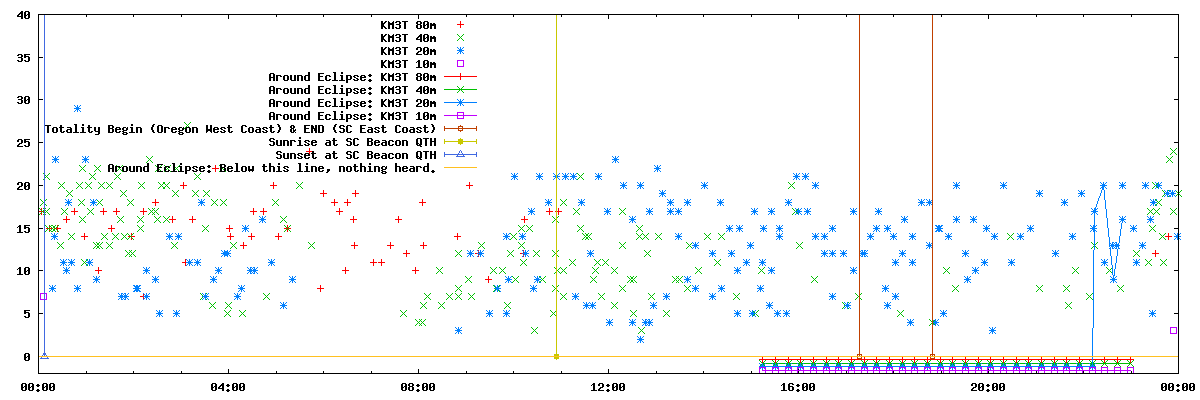
KM3T-2
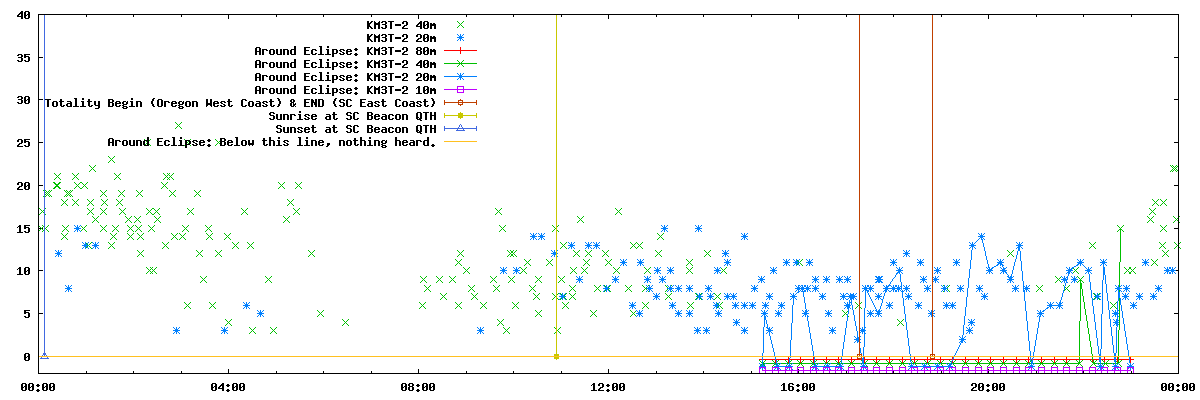
KM4LQP
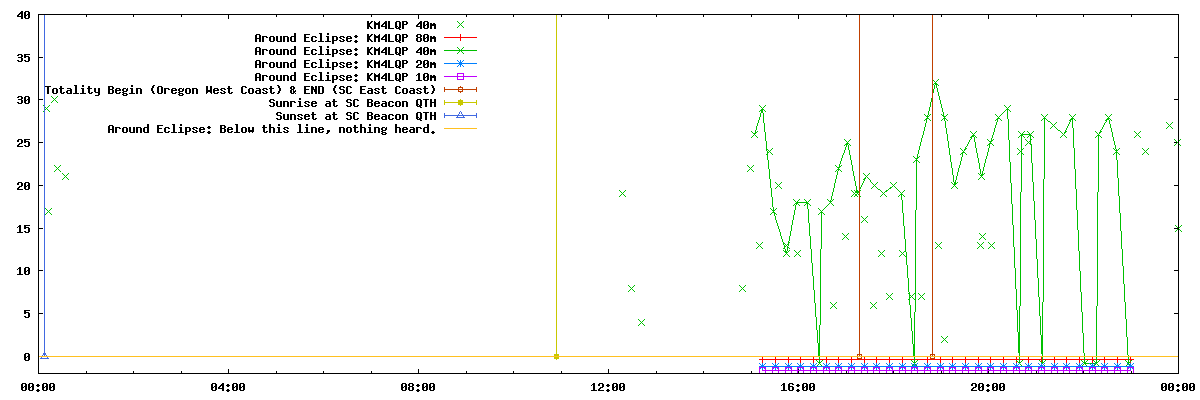
KQ2Z
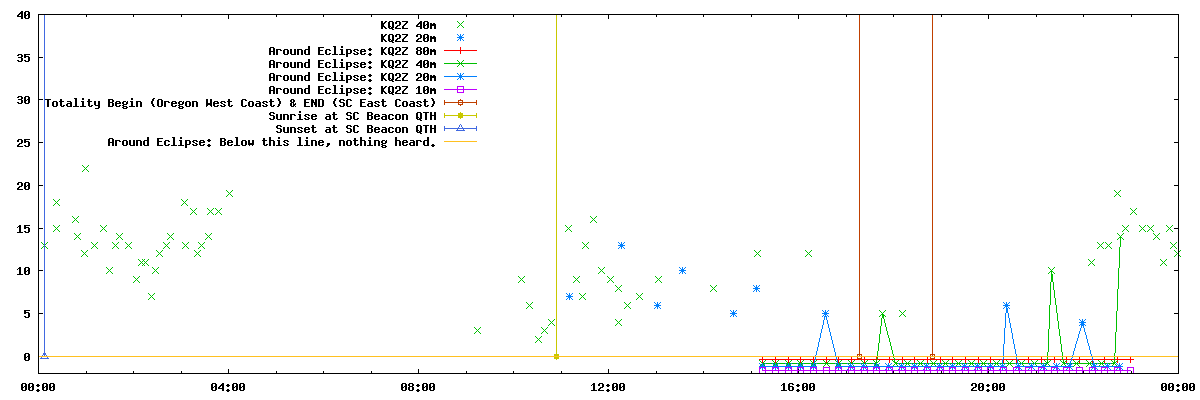
KU7T
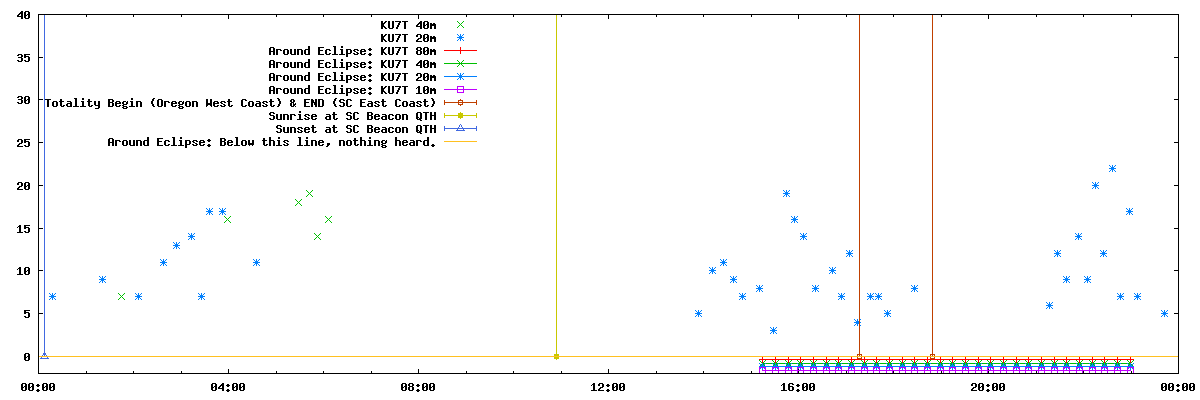
N0TA
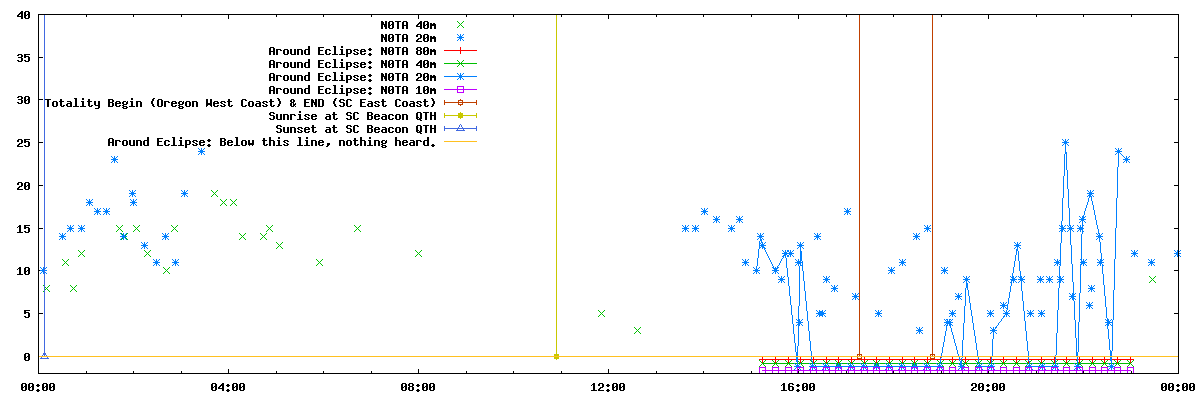
N2GZ
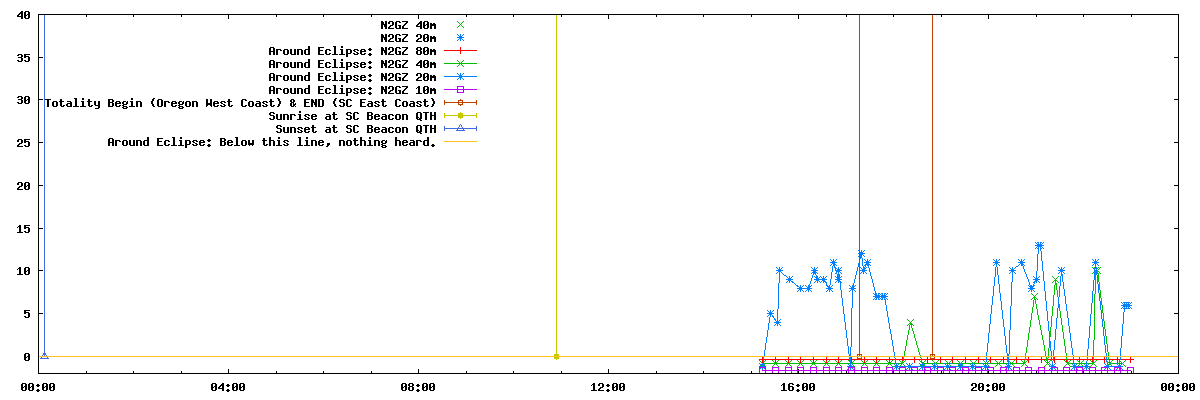
NC7J
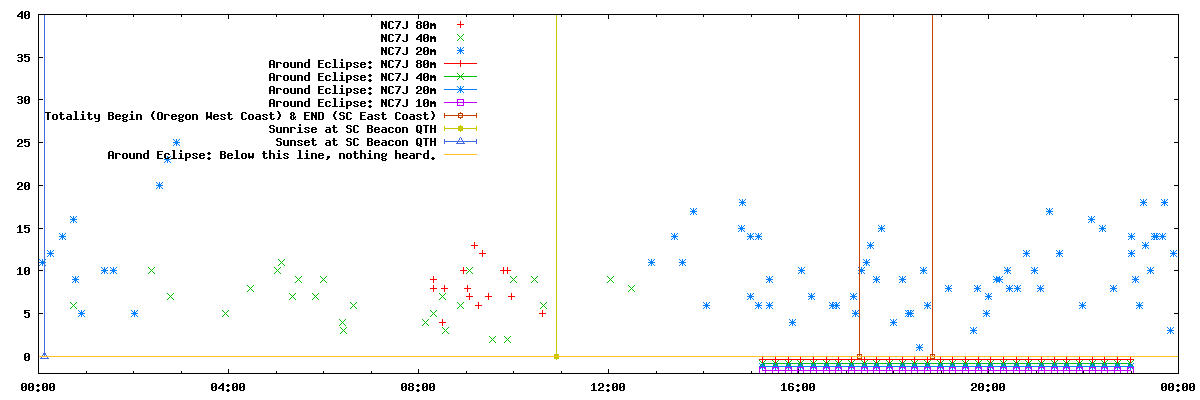
VE2AED
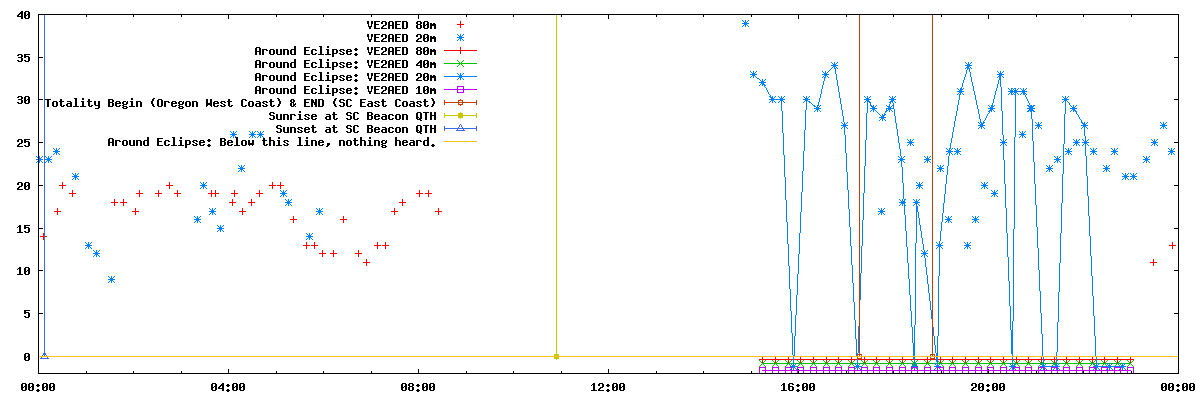
VE2WU
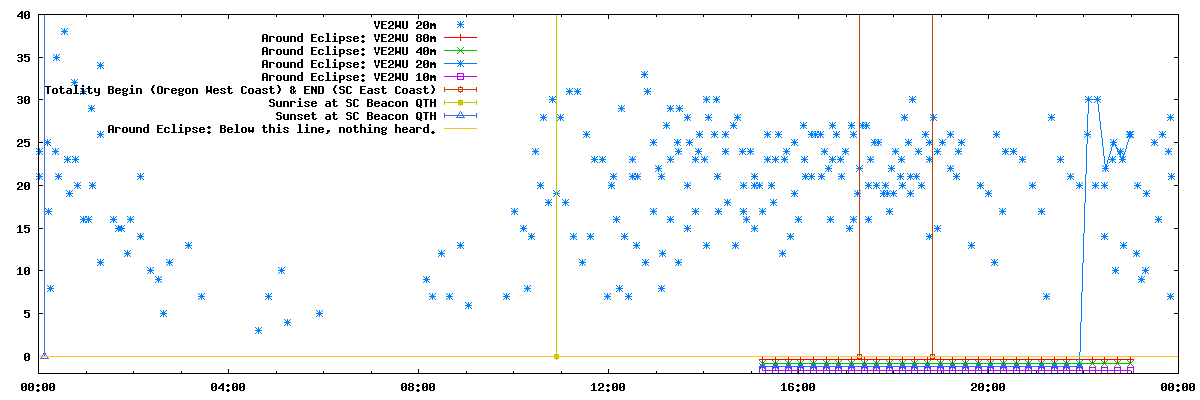
VE6WZ
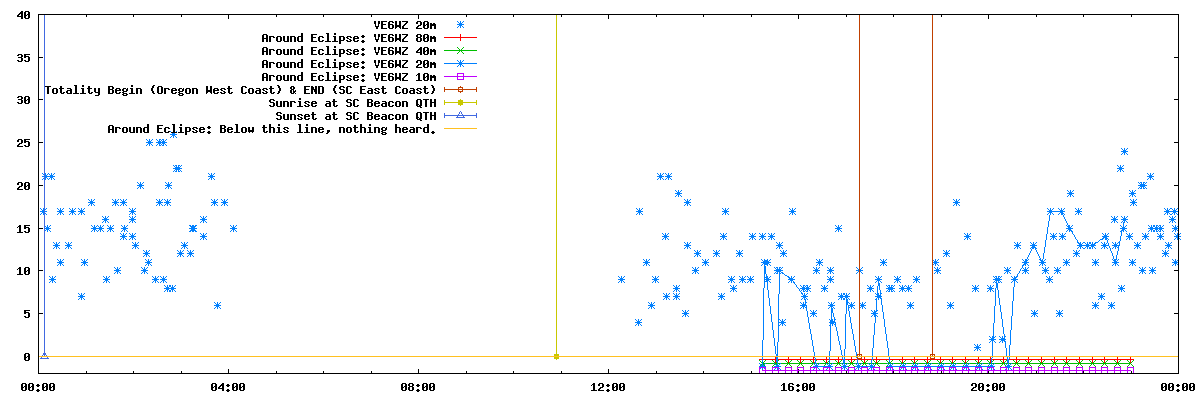
VE7CC
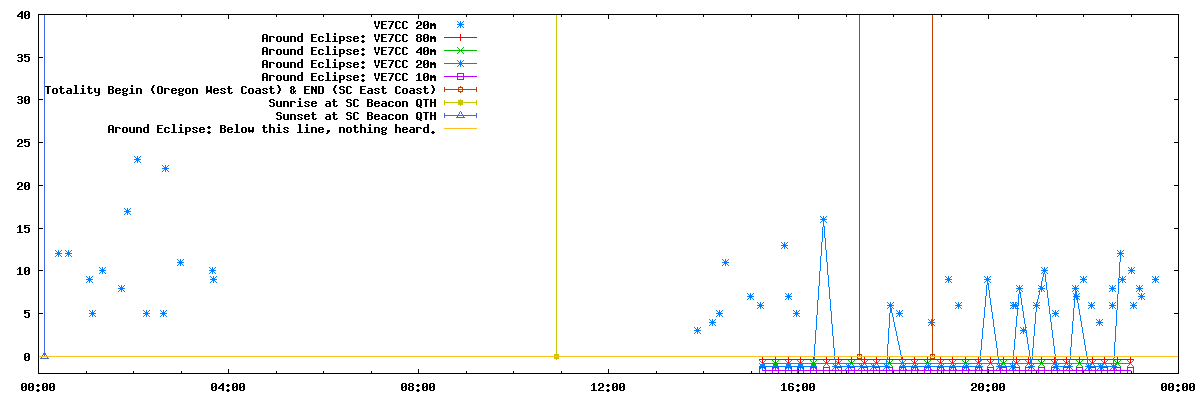
W2AXR
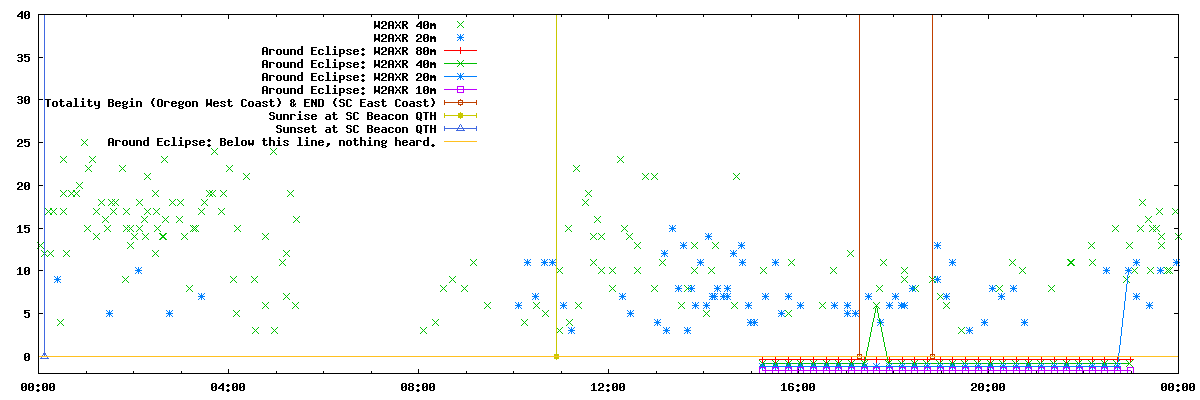
W7HR
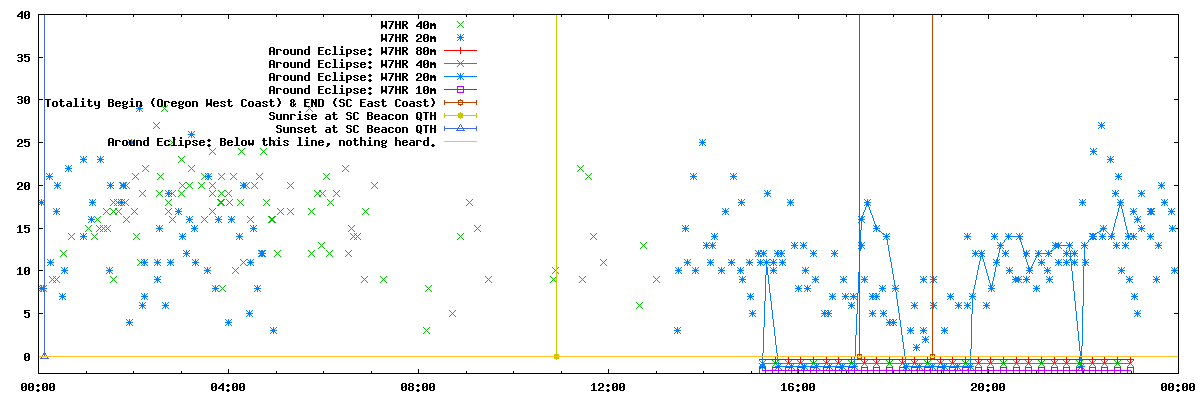
WA7LNW
